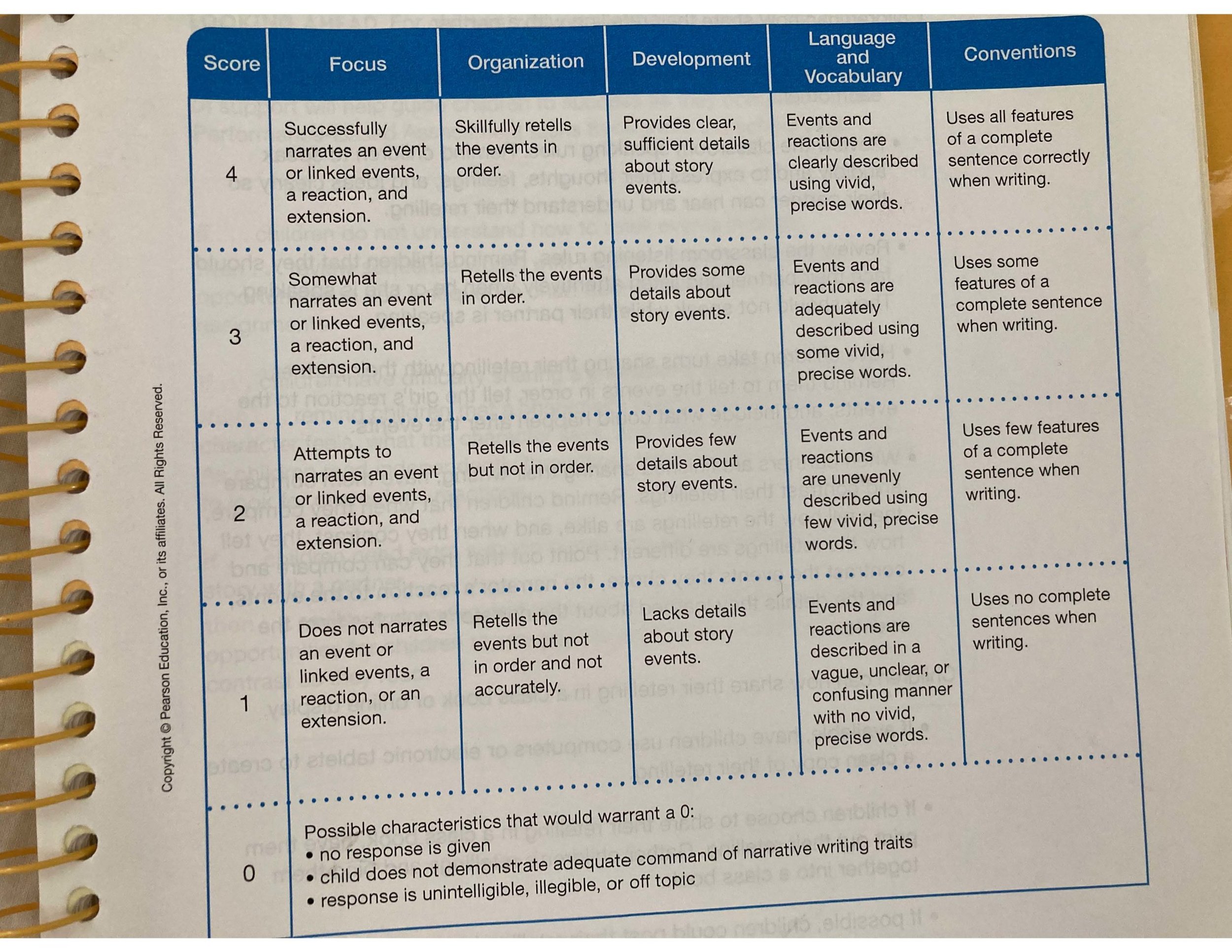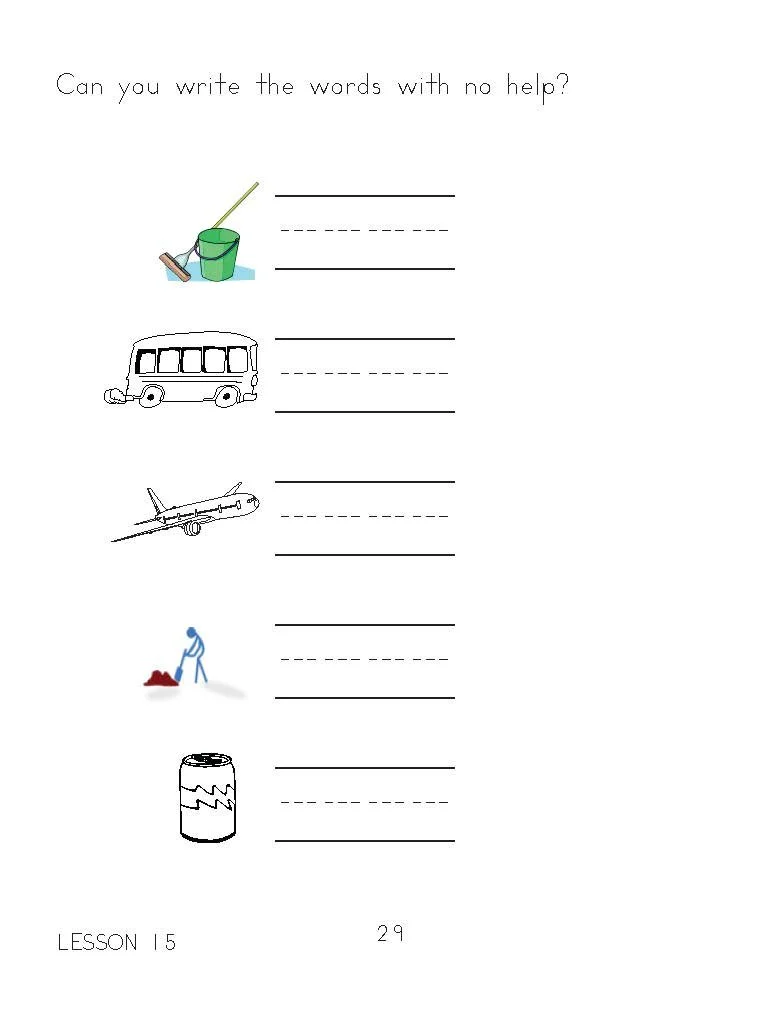What a good writing assessment for kindergarten looks like (and what it doesn’t look like!)
A kindergarten teacher sent me something a little shocking this week. It’s a great example for how NOT to assess writing in kindergarten and how the Common Core standards have impacted assessment and writing instruction.
But before I reveal it to you, please read 2 minutes of helpful background information. Don’t scroll down quite yet! It’s important to understand what this assessment is based on.
Here is the root of the problem this teacher encountered…
Common Core Standard for Writing ELA-Literacy.W.K.3 :
“Use a combination of drawing, dictating, and writing to narrate a single event or several loosely linked events, tell about the events in the order in which they occurred, and provide a reaction to what happened.”
As far as writing activities for kindergarten, this is doable. But how is this a standard? Let’s say we went to the pumpkin patch and I want my students to learn how to write a narrative in kindergarten. I give them a page with three boxes numbered 1, 2, and 3 and ask them to draw a picture of what happened first, second and last on the field trip. Some students could write or label and I would get some dictation from others. But here’s where making this a “standard” is a problem. reason for standards is to have a benchmark, which in turn needs an assessment to see if the standard is met. In order to have an accurate assessment, you need a well-written standard. Is this standard well-written?
“Use a combination of drawing, dictating, and writing to narrate a single event or several loosely linked events, tell about the events in the order in which they occurred, and provide a reaction to what happened.”
A well-written standard measures what a student can do independently. As soon as you add in dictating a story, you’re putting teacher expertise into the mix. This adds the possibility of scaffolding which increases what the student is capable of. (I’m all for scaffolding sometimes but it shouldn’t be part of a standard and the assessment of that standard)
A well-written standard focuses on one skill at a time. The above standard is trying to measure three separate skills: sequencing, narrating, and the fine motor skills of writing and drawing. What if a student can write a lot but got the events out of order? What if a student is excellent at telling the story but cannot make letters or draw very well? How would you decide in that case if they met the standard?
A well-written standard is specific. How much would a student have to write to meet this standard? What if it’s all pictures with only a few words?
A well-written standard should include the words, “By the end of kindergarten…”. (or what ever grade level) There should be a constant reminder that standards are what children are working towards and not what they should be able to do successfully at the beginning or middle of the school year. This helps to keep expectations realistic when teaching kids to write or in any other subject area.
And that leads me to what my teacher friend sent me this week.
Did you have to double-check like I did, to see it this was really for kindergarten?
Anyway, in the end, how useful would these ratings be? Would a teacher’s valuable time be well-spent trying to decide if little Olivia should get a 1, 2 or 3 since she somewhat narrated the events (3), but used no vivid, precise words (1), and used few features of a complete sentence (2)? I would love to see whoever wrote this have to carry it out themselves. And even if I could get her to fit into one number (2.5?), then what? Is knowing that she is a 2.5 writer in any way useful to my teaching?
OK, so what does a good assessment in kindergarten look like, then?
First of all, base your assessment on a clear standard! If the standard isn’t clear, break it down into separate skills (learning objectives) or don’t assess at all. Don’t waste your time on meaningless assessments. Just FYI, none of the Common Core standards for Writing in K-2 are well-written. Many of the Language standards are not well-written either, but a few of them are. Here are a few examples of good CC standards:
ELA-Literacy.L.K.2.D:
“Spell simple words phonetically, drawing on knowledge of sound-letter relationships.”
A completely unrealistic, unclear, unspecific assessment trying to measure a huge number of skills, and all based on the terribly written Common Core standard for Writing ELA-Literacy.W.K.3.
I have to say, Pearson really went delusional on this one. Are they expecting kindergarteners to write and draw all the events including details, the narrator’s reaction and what happened next (oh, and what might happen after that) with vivid words and complete sentences? Or are they thinking that the teacher has three hours to do this for every student while the rest of the class sits quietly with their hands folded?
Here is a sample of an assessment for that standard in Growing Writers kindergarten Book 6. Each of the words (mop, bus, jet, dig, and can) has one of the vowel sounds and there are ten consonant sounds represented. You can easily see at a glance which students still need instruction and exactly what letter sounds are still missing for them. And, you can easily make your own assessment just like it or add more words so that all the consonant sounds are represented.
ELA-Literacy.L.K.1.A
“Print many upper- and lowercase letters.”
OK, the word “many” is vague, but at least it’s focused on just one skill. You can easily assess this by giving your students a blank lined sheet of paper and having them write the alphabet. If most students are able to do this, add your own criteria. Can they do it all with letters correctly formed? Can they do it in 2 minutes or less? (measuring writing fluency)
To sum up, if your ELA program has some weird and complicated assessments, there’s a good chance it’s a by-product of badly written standards. Please print out this blog post to share with your administrators as you explain why you won’t be giving that assessment.
I am currently working on a set of assessments that will include all basic writing skills for kindergarten and first grade, beginning with the skill of holding a pencil and staying seated. These are assessments that can inform instruction in a way that makes sense. To be notified when these are available online, make sure you’re on my mailing list (to do that, download my freebies on the homepage).



